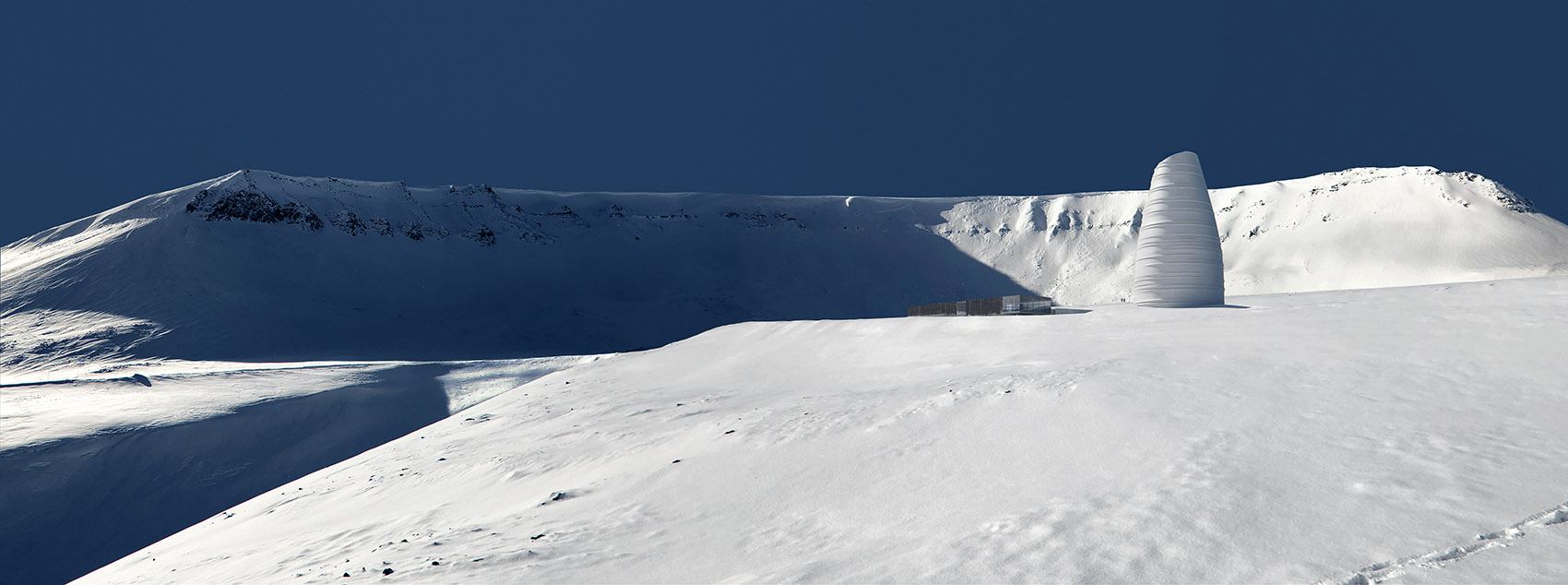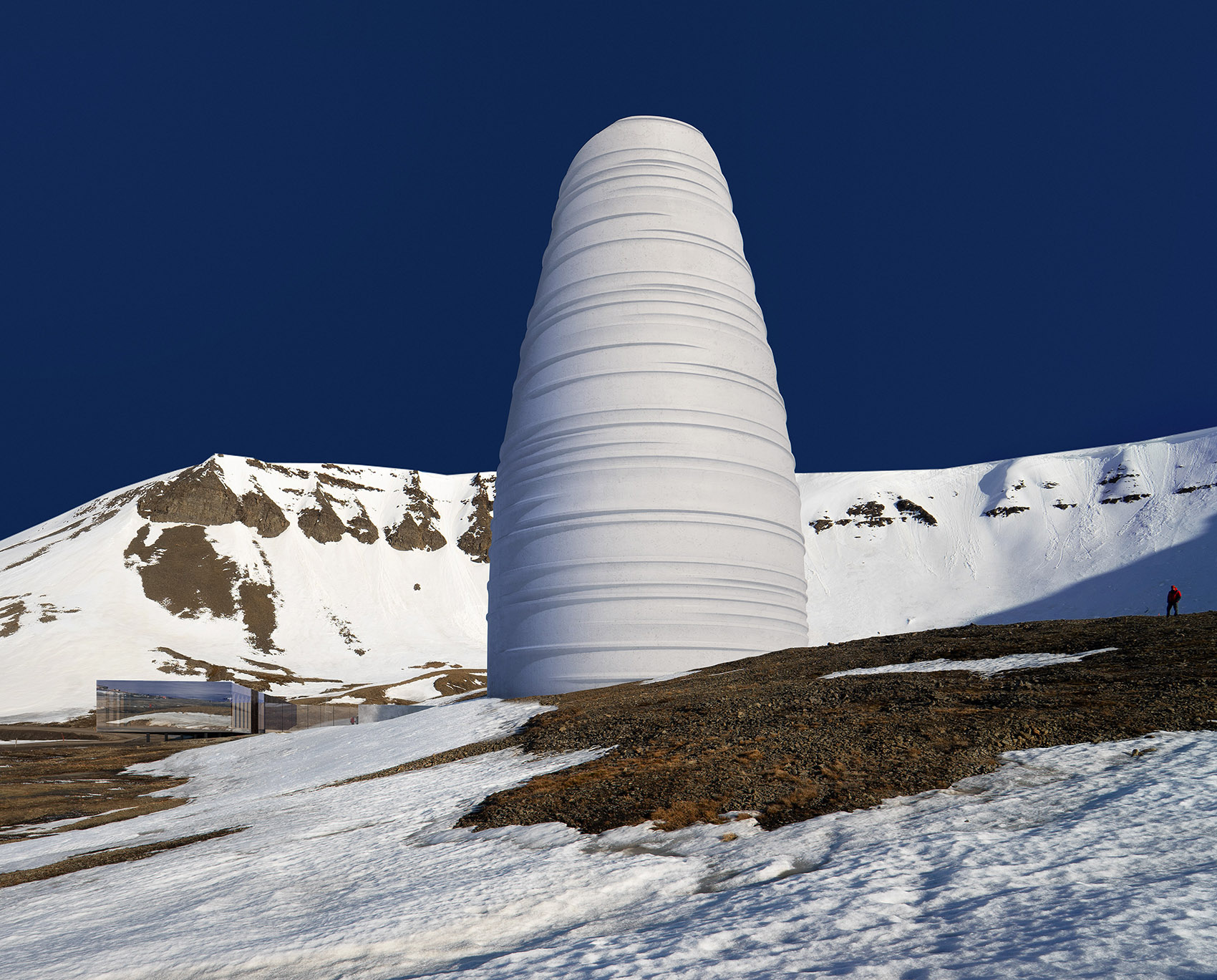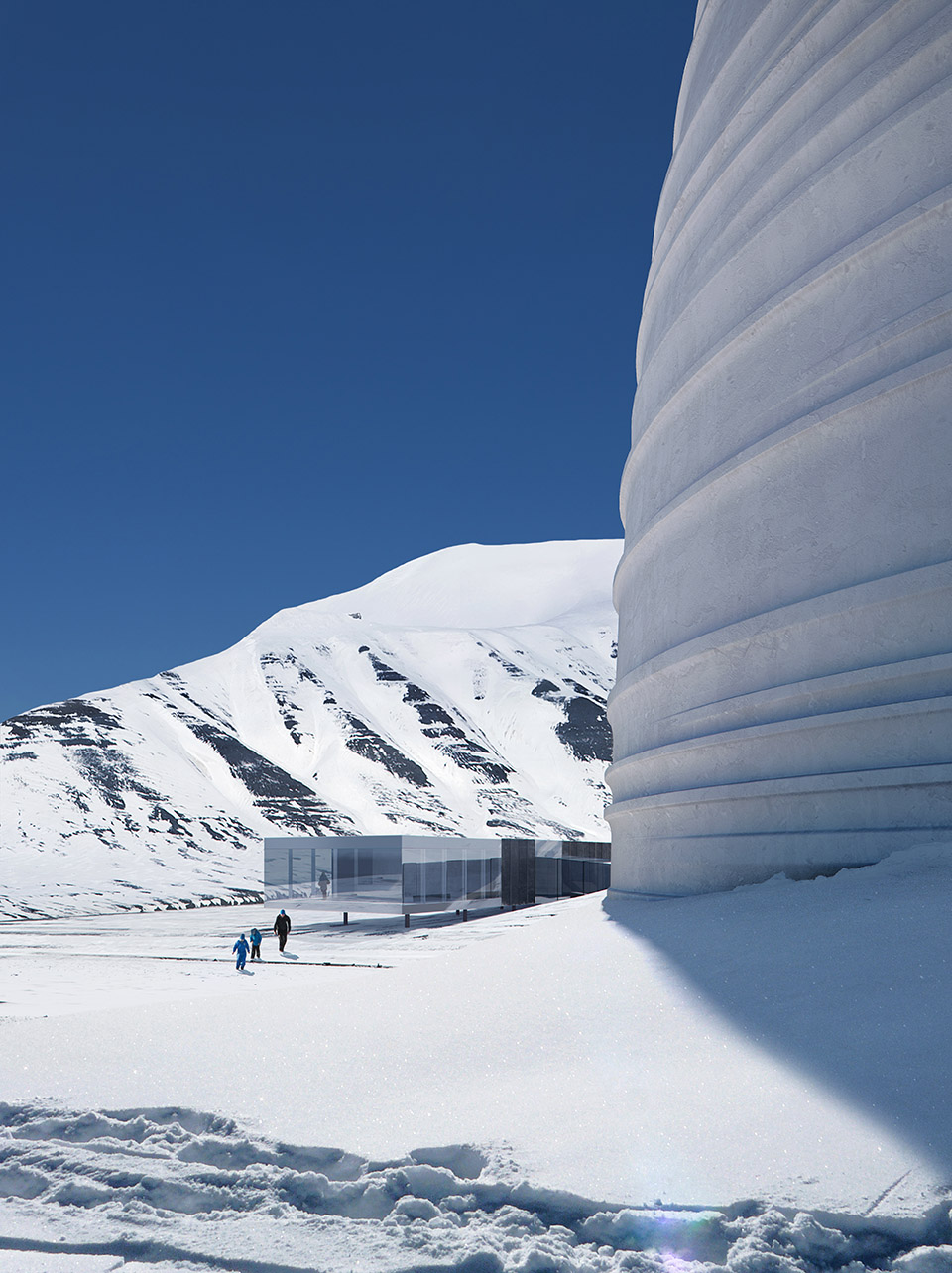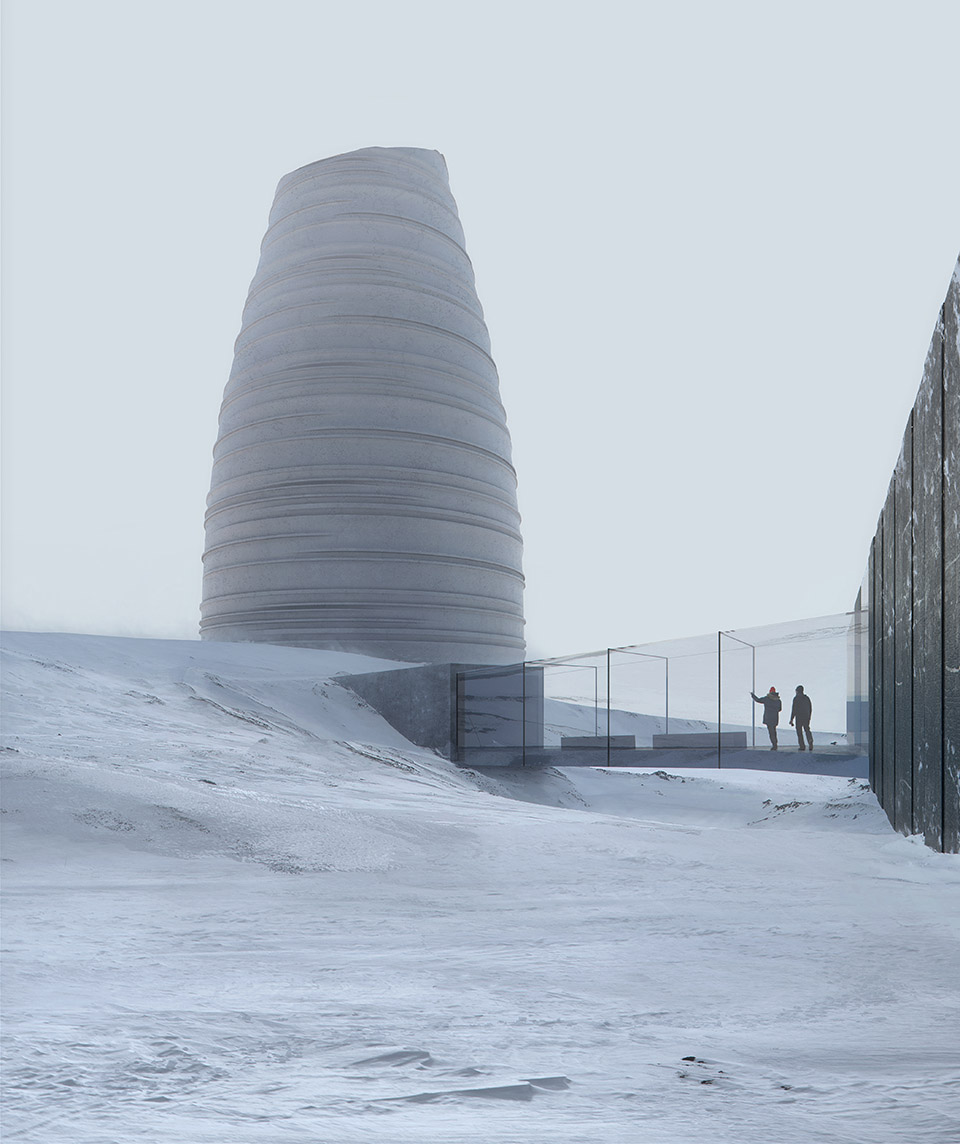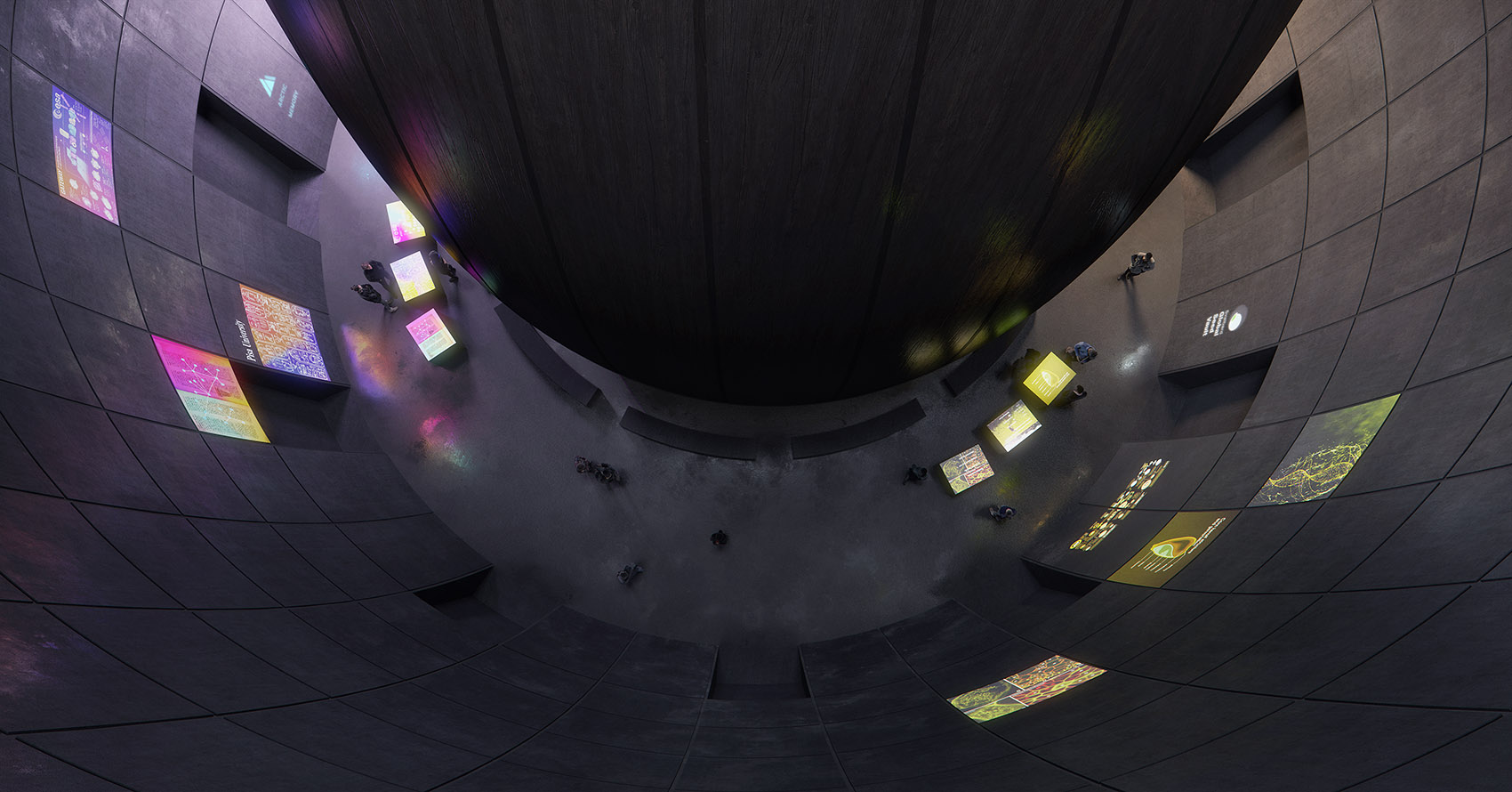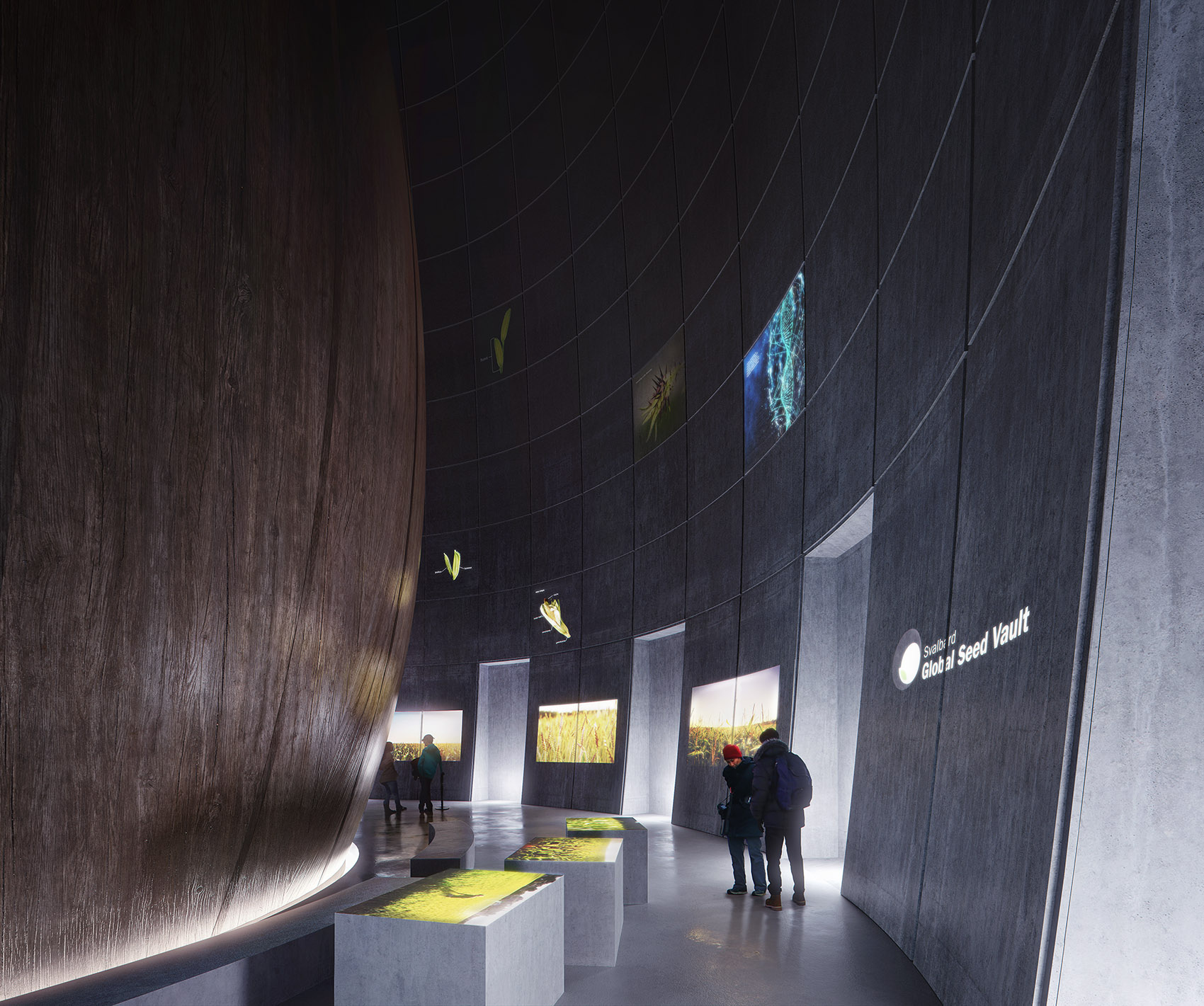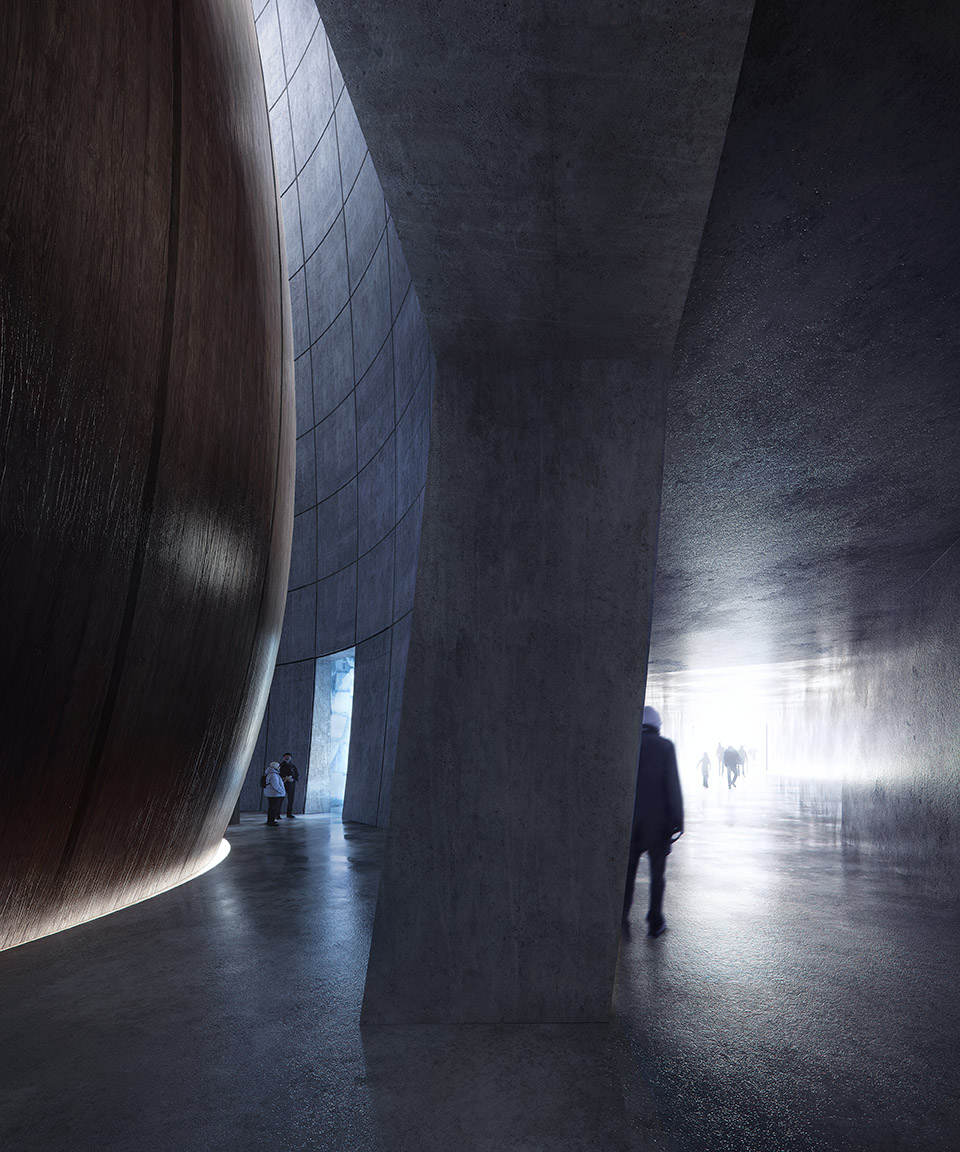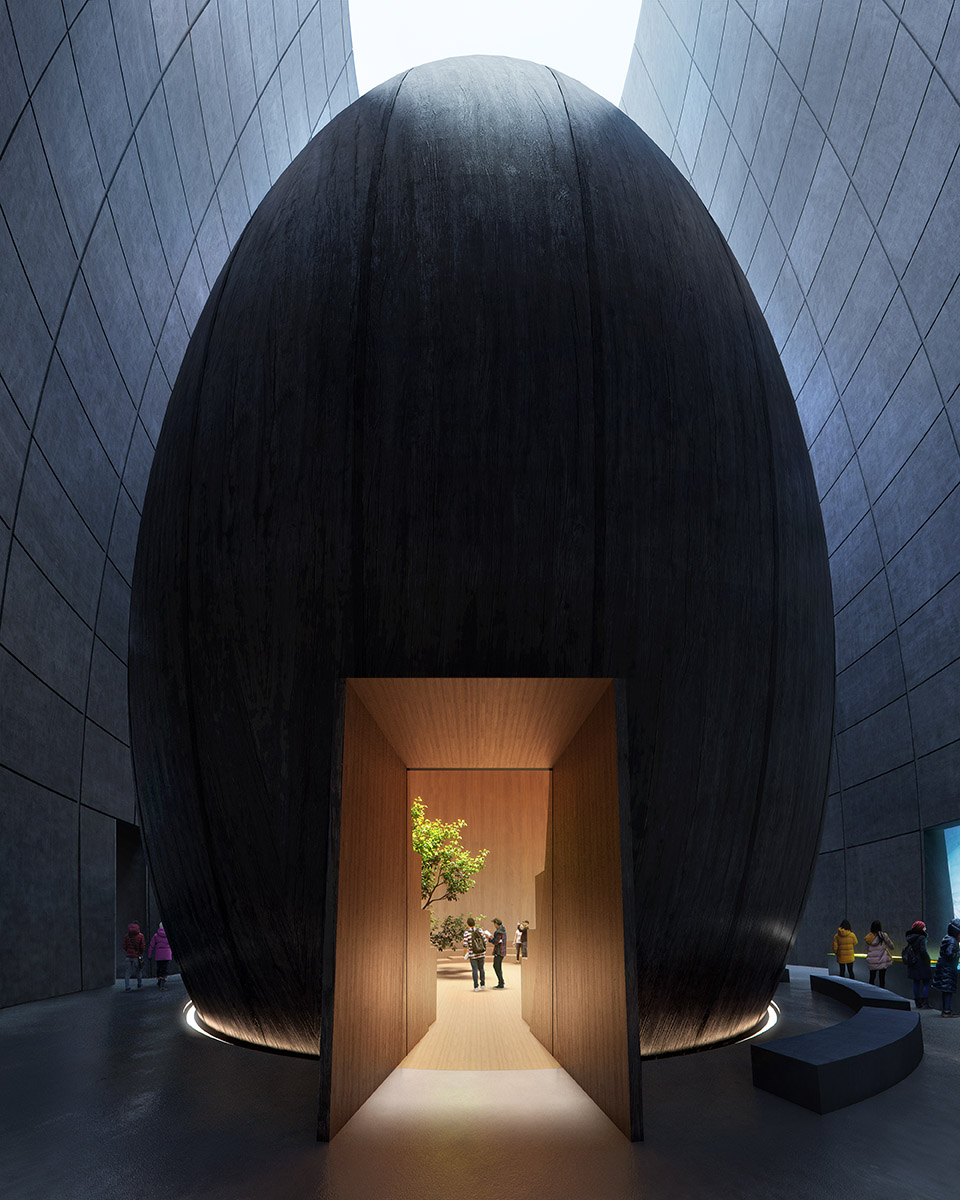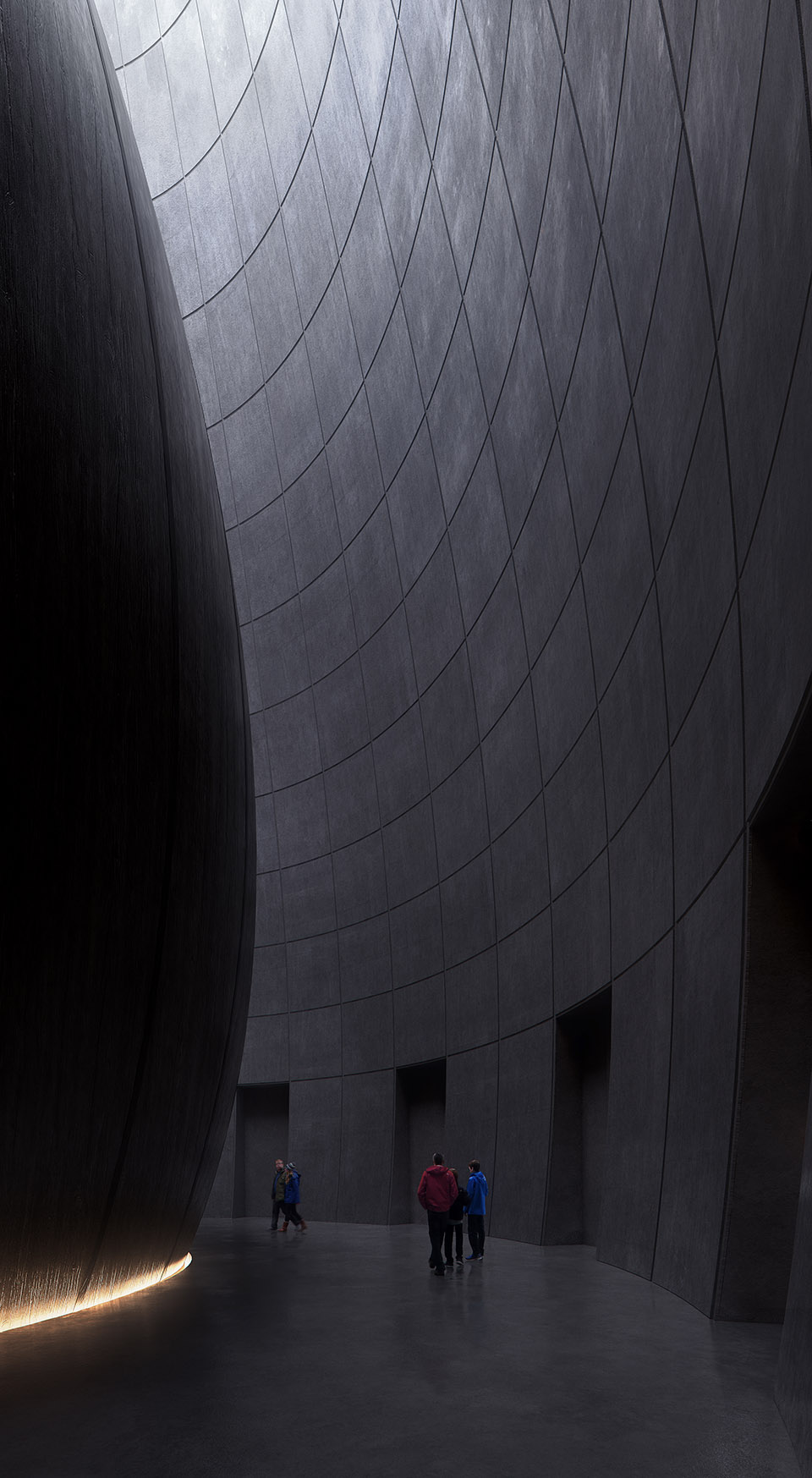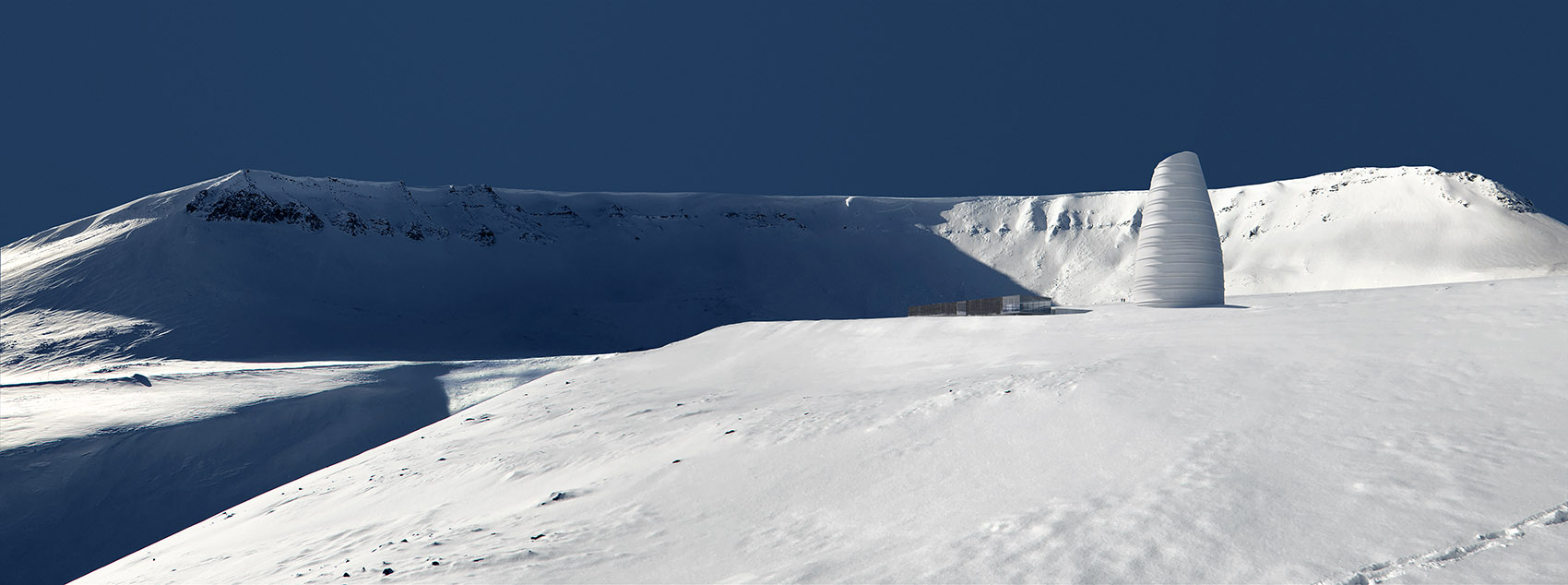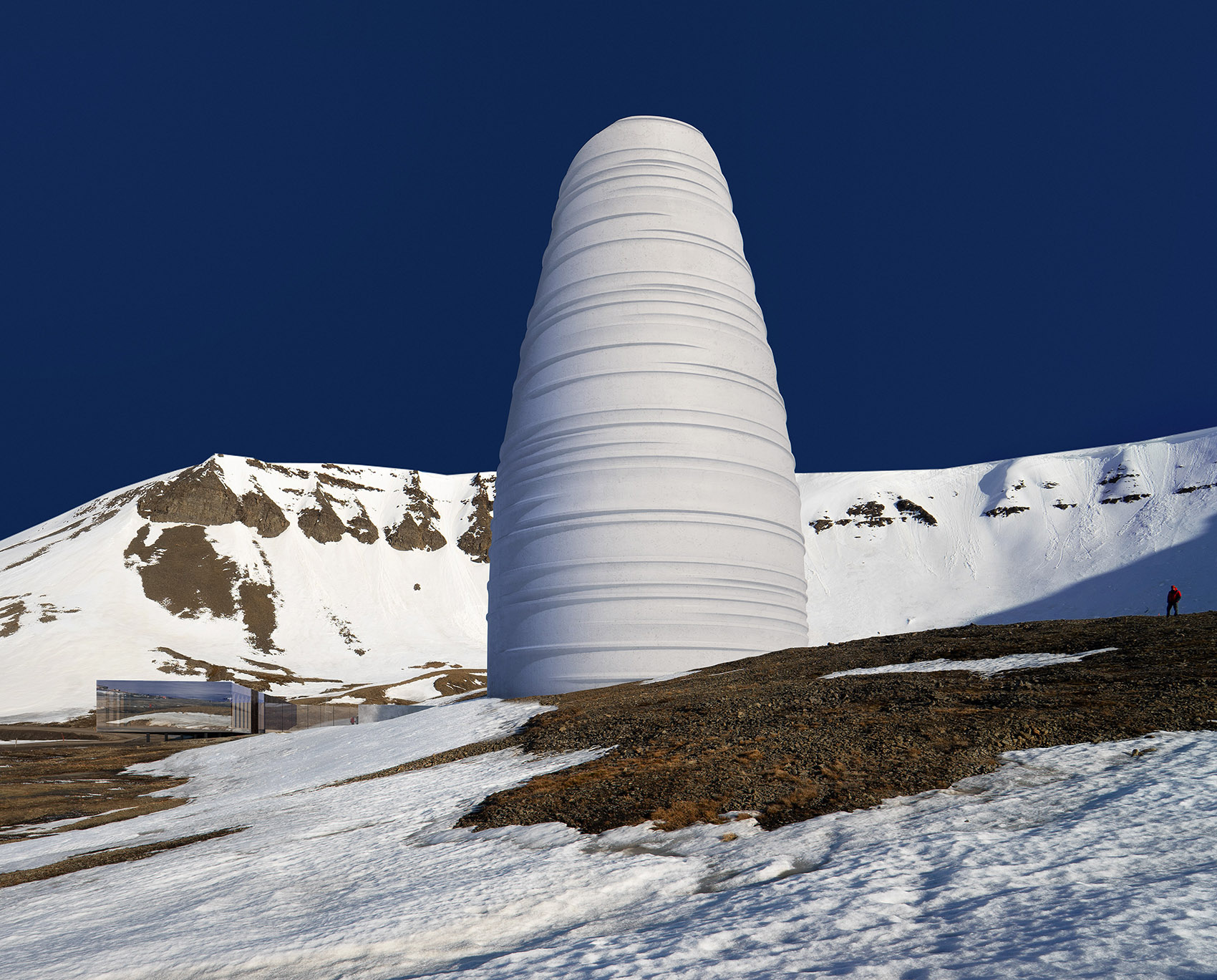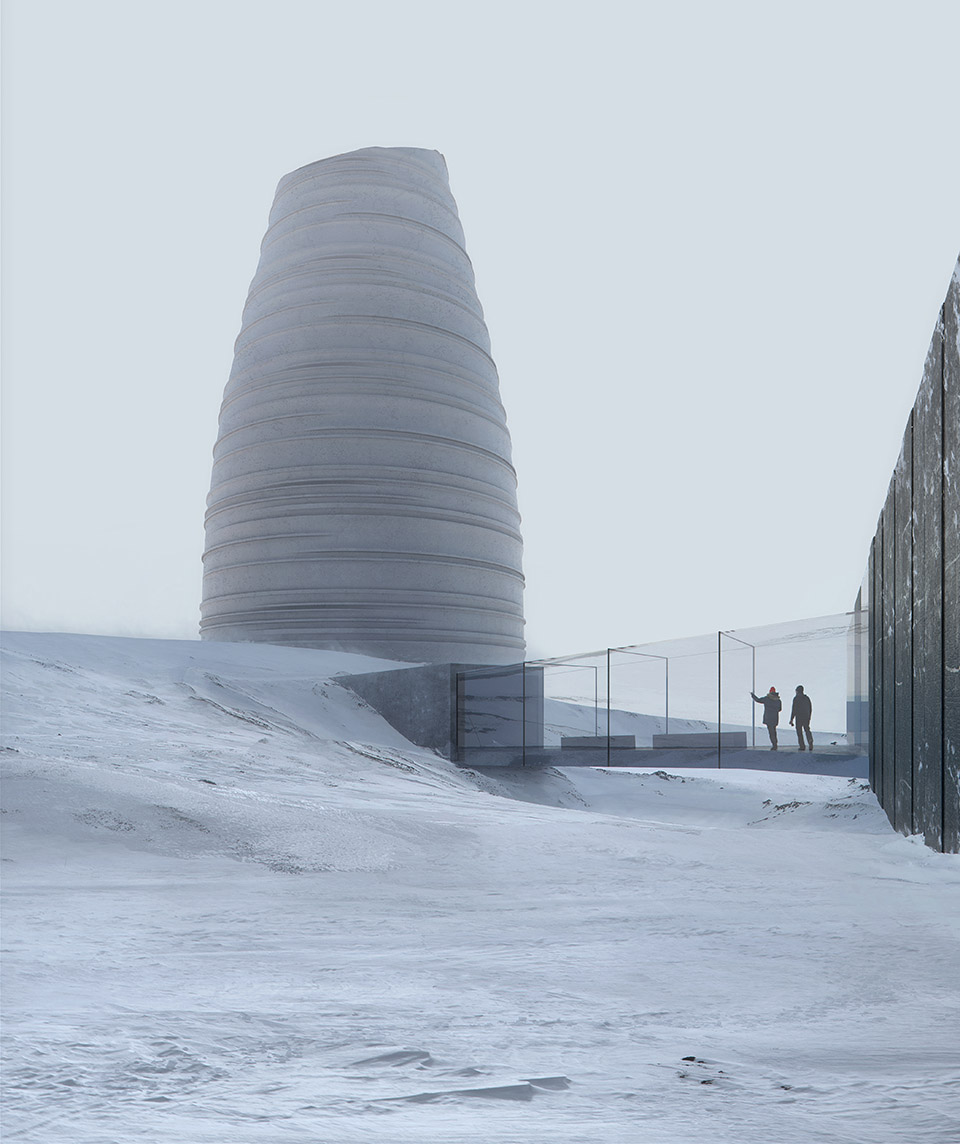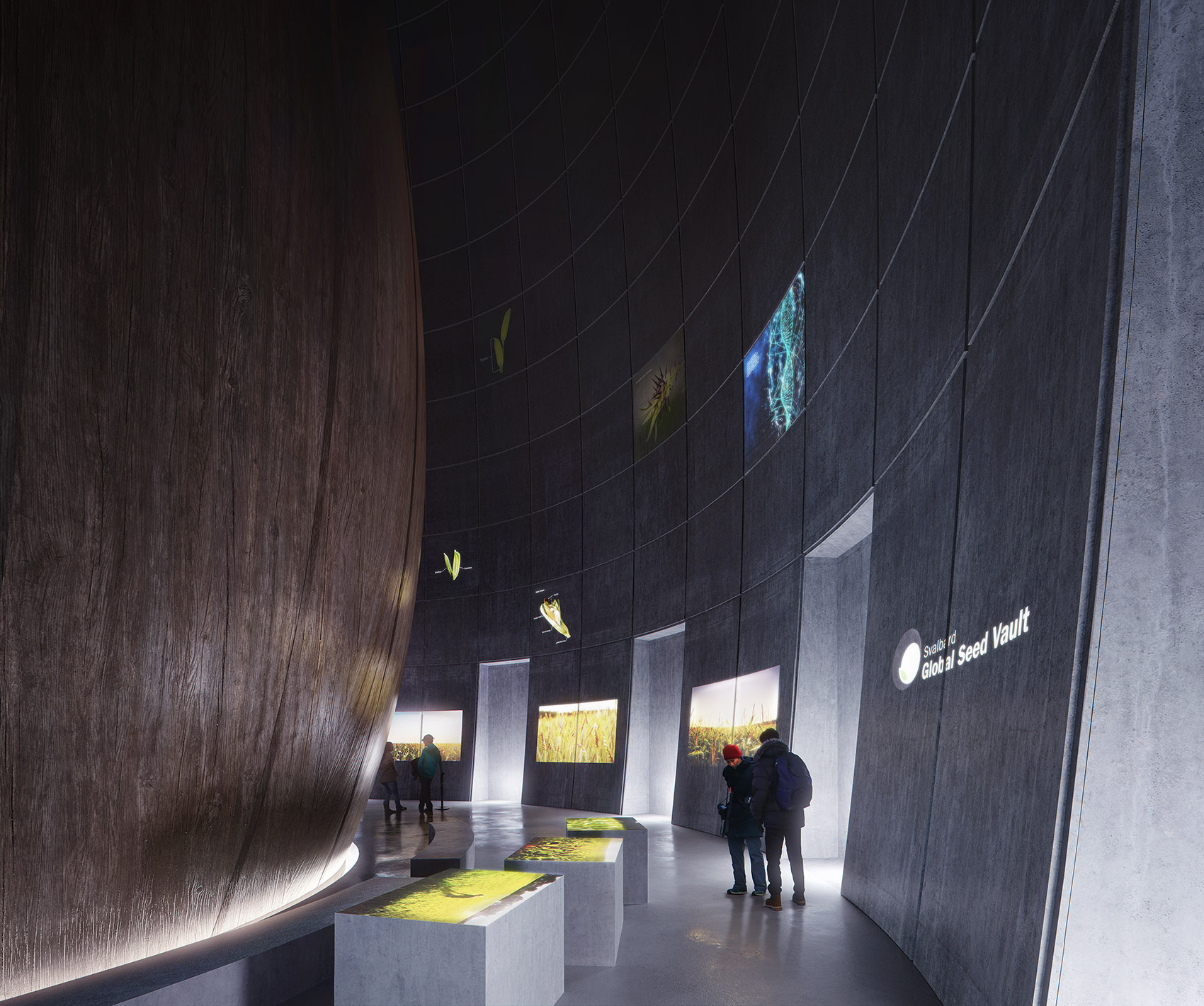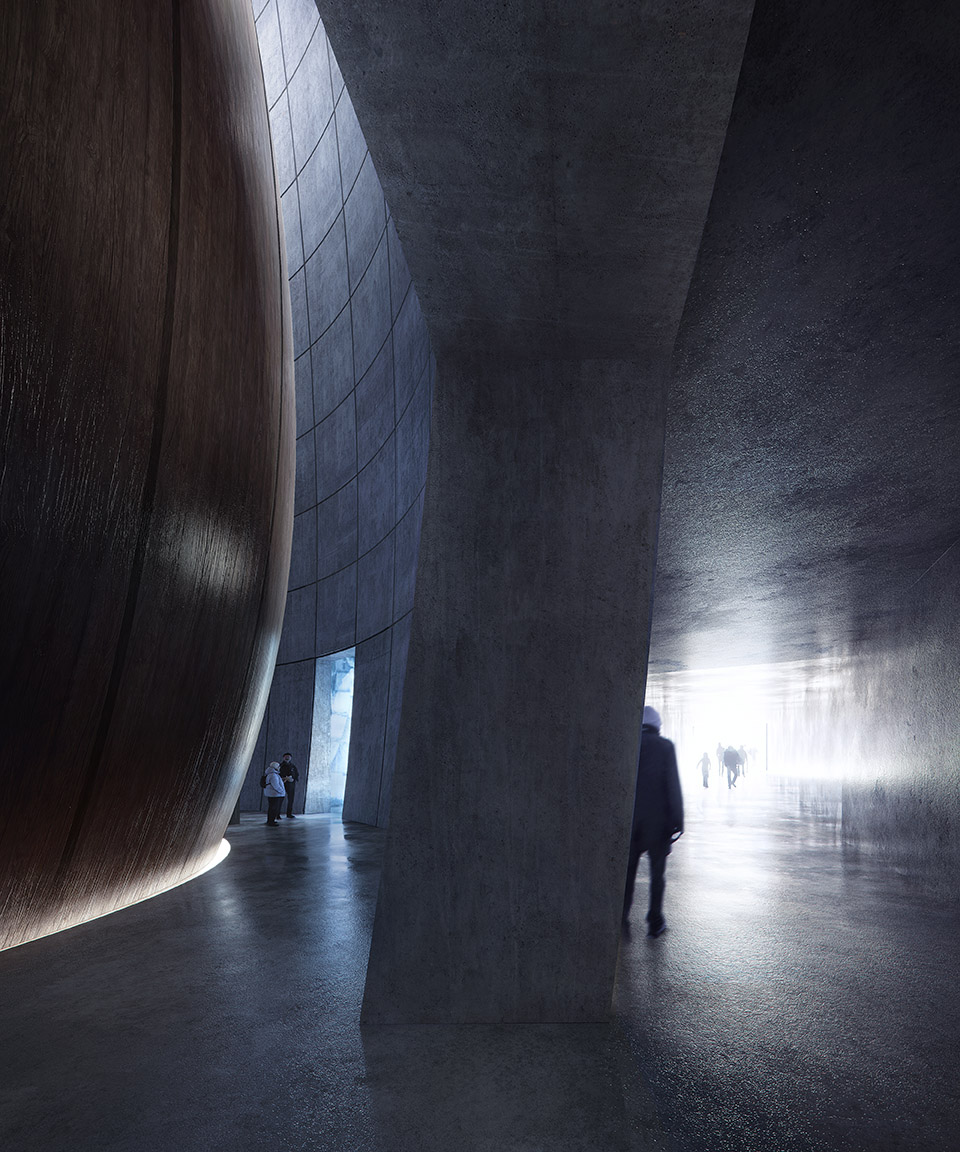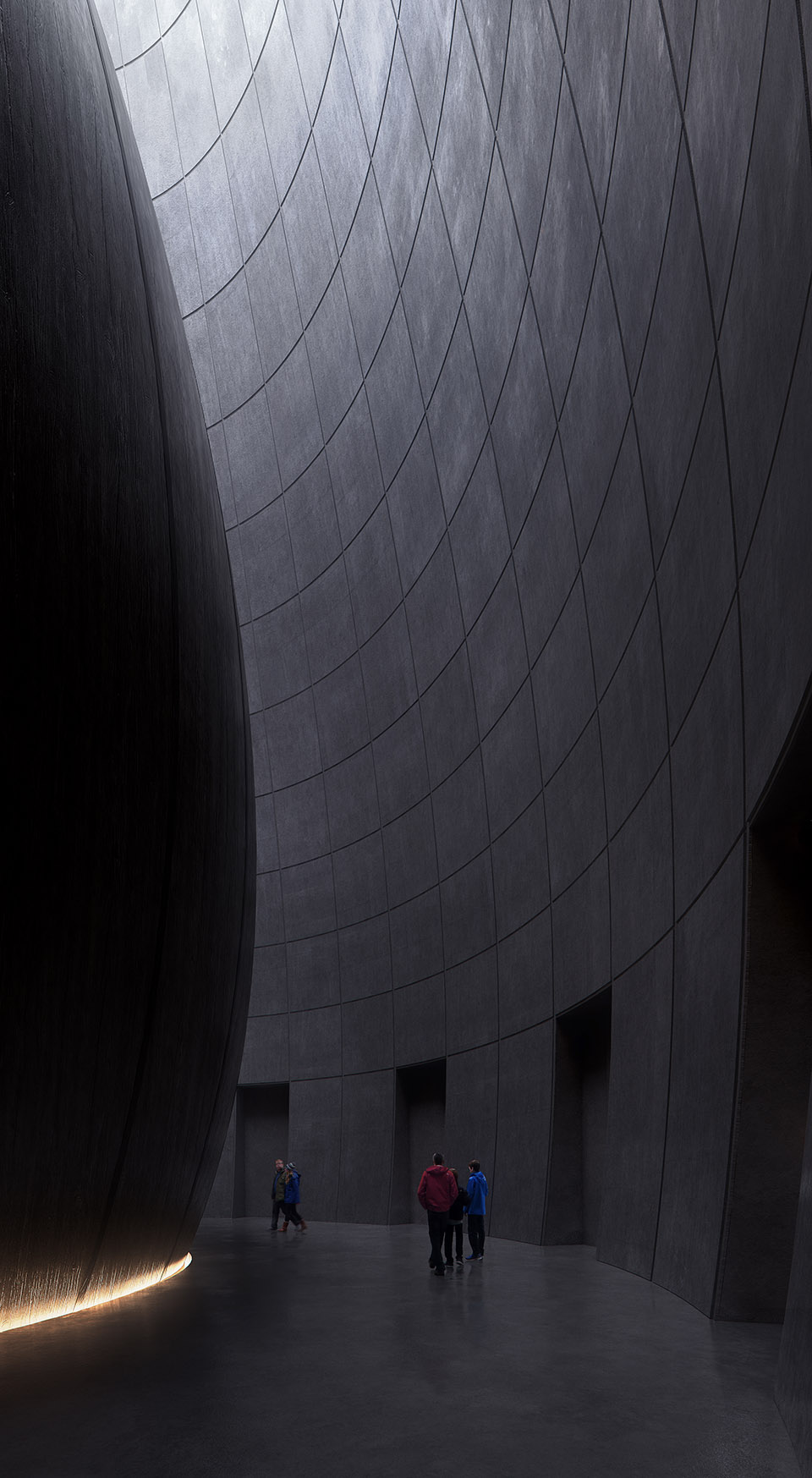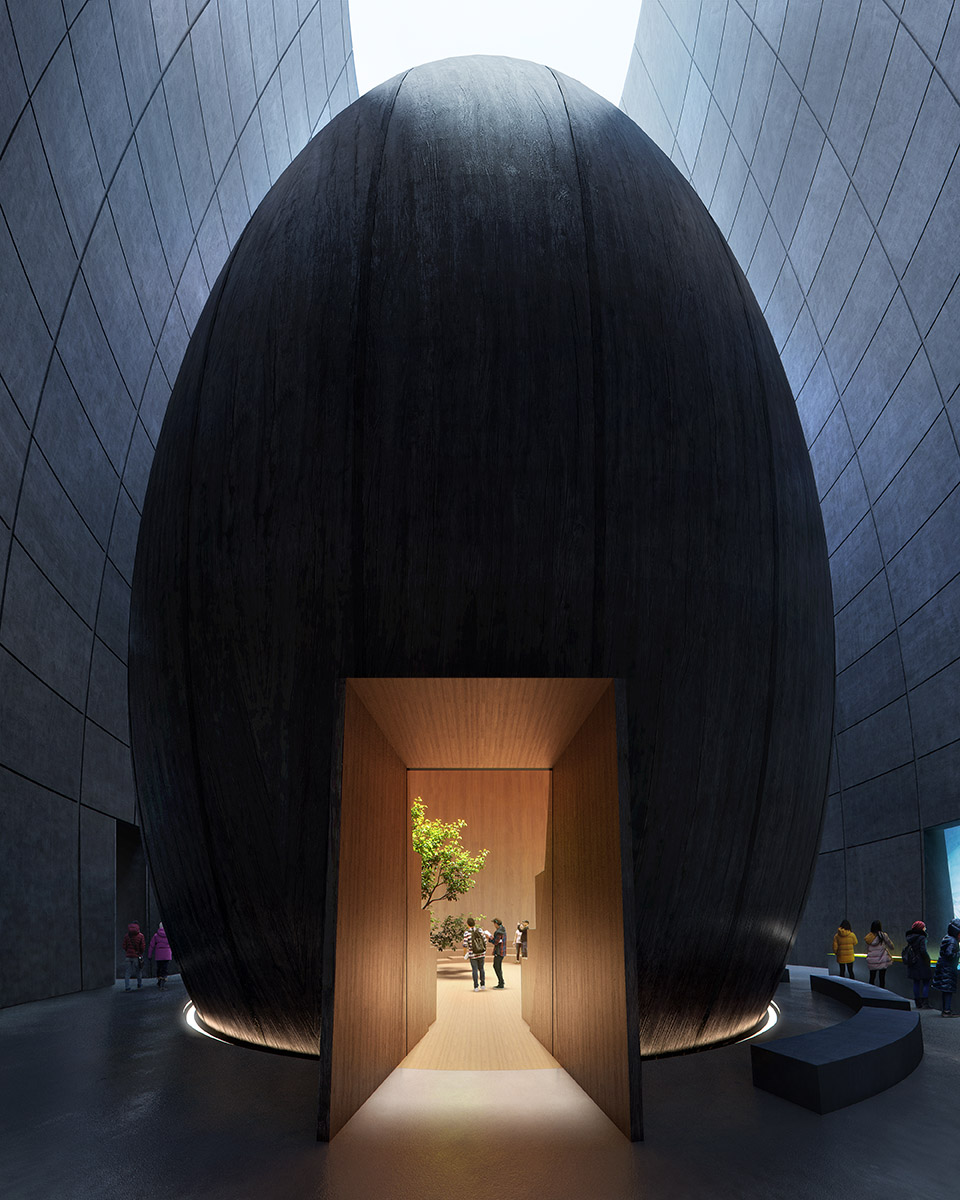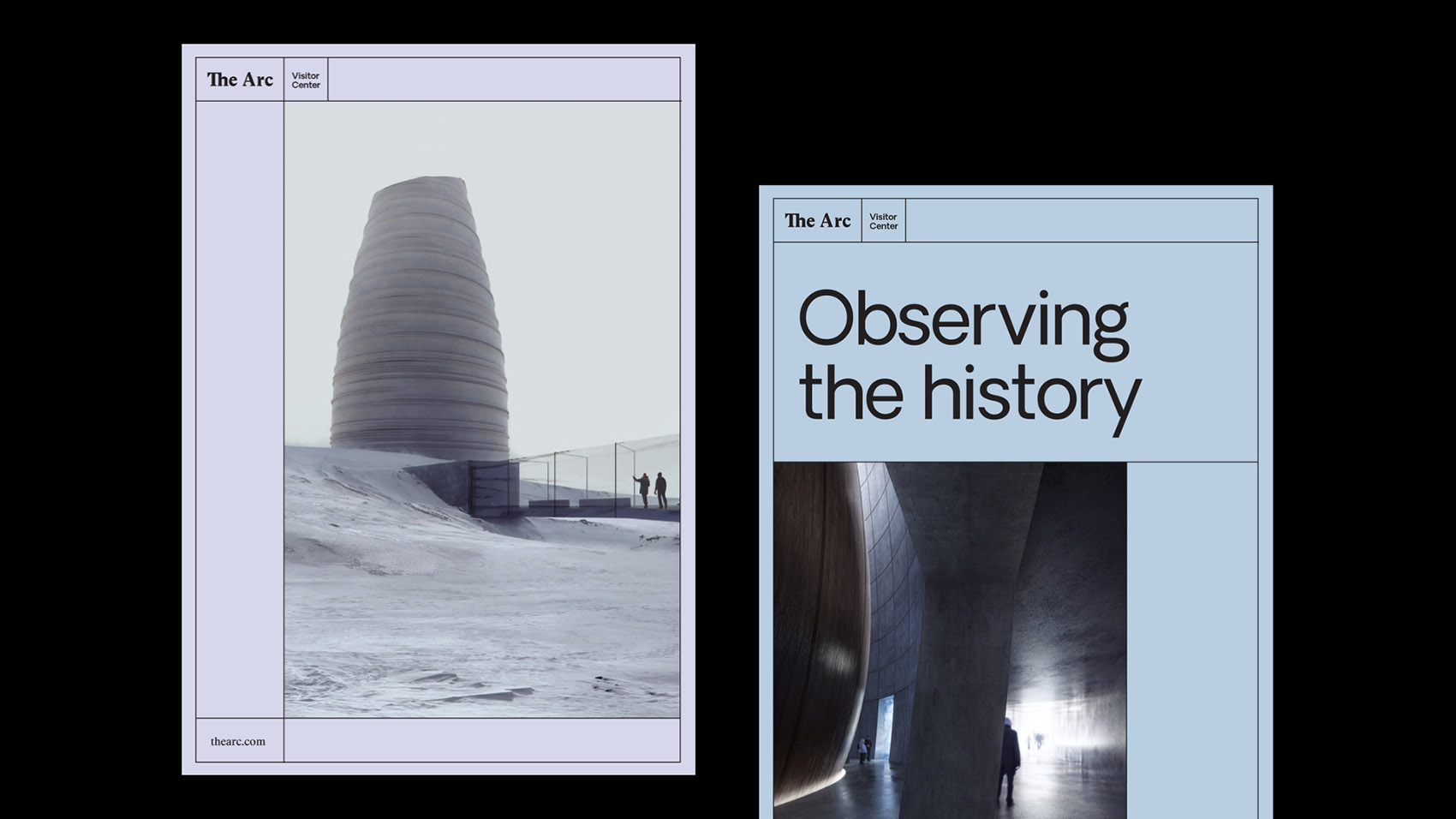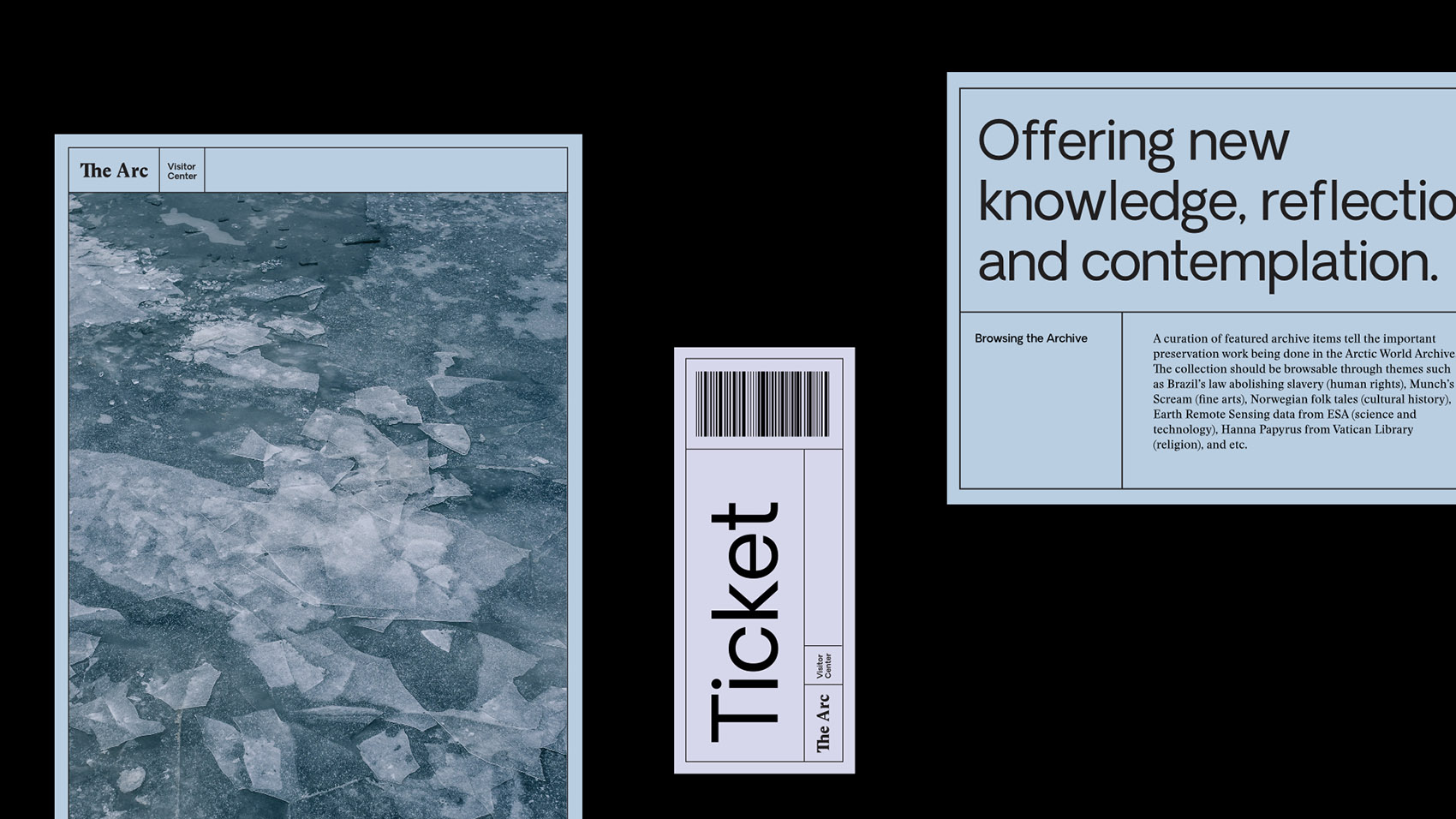建筑事务所Snøhetta在地球赤道以北78°的北极圈设计了一个名为The Arc的游客中心。该游客中心位于挪威斯瓦尔巴特群岛(Svalbard)上的朗伊尔城(Longyearbyen)内,是专门为北极保护区所建造的一个空间,同时也是世界记忆的档案库。在Arctic Memory AS的委托下,The Arc游客中心将向人们展示世界上最大的安全种子库——斯瓦尔巴全球种子库(Svalbard Global Seed Vault)和致力于保护世界数字文化遗产的北极世界档案馆(Arctic World Archive)中的部分内容。同时,在挪威自然历史博物馆(Norwegian Natural History Museum)的支持下,该游客中心还将进一步向人们介绍斯瓦尔巴特群岛独特的地质条件是如何在数百万年的历史中进行演变的。
In Longyearbyen, Svalbard, 78° north of the Earth’s equator, Snøhetta has designed a visitor center for Arctic preservation storage called The Arc, referencing its location in the Arctic and its function as an archive for world memory. Commissioned by Arctic Memory AS, the visitor center will showcase content from the Svalbard Global Seed Vault – the world’s largest secure seed storage, and the Arctic World Archive – a vault that aims to preserve the world’s digital heritage. In collaboration with the Norwegian Natural History Museum, the visitor center will further provide its audience with insights into how the Svalbard Archipelago’s unique geology has transformed over millions of years.
▼游客中心远景,distant exterior view of the visitor center © Snøhetta and Plomp
游客中心由入口部分和展览大楼等两个彼此分离的建筑体量构成。入口体量不仅容纳了大堂、售票处、衣物寄存处和咖啡厅等功能空间,还包含了一系列机房和北极世界档案馆的生产设施等。交叉层压木板构成的结构框架与实木的墙体共同围合出一个坐落在桩基上的长方形体量。为了防止人为热量对北极的永久冻土和积雪造成影响,该体量架空于地面之上。入口体量采用烧焦颜色的木材和深色玻璃作为外表皮饰面,内部则呈现出木元素的空间氛围。屋顶安装了一系列太阳能电池板以收集和利用太阳能。
Thursday, October 31, 2019 — The architecture divides the visitor center into two separate volumes; the entrance building and the exhibition building. The entrance building contains visitor functions such as lobby, ticketing, wardrobe and a café, as well as production facilities for the Arctic World Archive and technical rooms. A structural frame of cross laminated timber in combination with stiffening wall discs in solid wood forms a rectangular building volume that rests on pile foundations in the bedrock. The building is suspended off the ground to prevent heating of permafrost and accumulation of snow. The entrance building is clad with burnt wood and dark glass panels, while the interiors consist of exposed wood elements. Roof areas are designed to accommodate solar panels for harvesting solar energy.
▼游客中心近景,由长方形体量的入口部分和白色螺旋造型的展览体量构成,close exterior view of the visitor center that consists of two separate volumes: a rectangular entrance building and a spiral white volume for exhibition © Snøhetta and Plomp
入口体量和展览大楼不仅是在形式上,还是在材质纹理上,抑或是在颜色上,都有着鲜明的对比。入口体量造型规整,轮廓线条干净利落,给人一种理性的感觉;而展览大楼则具有独特的螺旋状造型、尺度和空间次序,不仅呈现出一种永恒感和无比例感,更营造出一种既存在于世间又超脱于世外的氛围。从外部看,展览体量看起来就像是一个粗犷的大石块,但只要仔细观察就会发现,其外表面的纹理都是由场地所特有的、常见的极端天气条件通过侵蚀过程塑造而成的。同时,它也像是破土而出的自然有机体,静默地向人们展示着地球表面的层理。
The entrance building and the exhibition building contrast each other in form, texture and color. While the entrance building is rational and stoic, the exhibition building expresses a unique shape, scale and spatial sequence, designed as a timeless, scale-less form that is both familiar and otherworldly at the time. From the outside, the exhibition building appears as a robust monolith – its outer surface formed by the erosion of the site’s unique and often extreme weather conditions. It may also resemble an organic form drilled out of the ground, exposing the stratification of the Earth’s surface.
▼入口体量和展览大楼不仅是在形式上,还是在材质纹理上,抑或是在颜色上,都有着鲜明的对比,the entrance building and the exhibition building contrast each other in form, texture and color © Snøhetta and Plomp
悬空的玻璃连廊可以说是整个游客中心的一个重要的空间节点。从景观朝向上看,站在这个玻璃连廊上,就好像是置身于周围的自然环境中一般,同时得益于连廊绝佳的地理位置,无论是南侧高耸的地质构造,还是北侧壮丽的自然环境和展览大楼,都能尽收眼底。从功能上看,一方面它可以引导着游客们进入展览大楼,另一方面它也起到了组织人流的作用——鉴于其空间尺度,游客们不能再一窝蜂地大量涌入,而是要被分成一系列人数较少的群组,依次有秩序地通过。可以说,入口体量代表着人们所熟悉的世界,而展览大楼则代表着一个陌生的次元,通过玻璃连廊,人们从已知迈入未知,仿佛从现世“掉落”到斯瓦尔巴特群岛的“永久冻土空间”中。
Access to the exhibition building occurs across a glass access bridge, which is used to organize visitors into smaller groups. On the access bridge one is exposed to the surroundings and can experience from a single vantage point the towering geological formations to the south, the spectacular views to the north and the exterior of the exhibition building. The contrasting volumes are designed to give visitors the experience of going from a familiar entrance into a real vault inside the permafrost of Svalbard.
▼悬空的玻璃连廊连接着入口部分和展览大楼两个彼此分离的体量,the glass access bridge connects the the entrance building and the exhibition building © Snøhetta and Plomp
在展览大楼令人惊叹的垂直拱顶之下,有一个强大的数字档案馆。这里经常举办各种永久性和临时性的展览,为人们提供各种第一手资料。首层的地面上设有指示性的文字,以告知人们世界北极档案室和斯瓦尔巴全球种子库中所储藏着的资料和资源。值得一提的是,档案室和种子库的馆藏资源十分丰富,从爱德华·蒙克(Edvard Munch)的系列艺术品和有着1500年历史的梵蒂冈手稿,到巴西足球运动员Pelé的电影短片和世界种子库的大多数资源,可谓是应有尽有。档案馆空间的温度常年保持在4摄氏度,设有静音照明,从而创造出一种置身于地下般的感觉。在讲解机构Tellart的帮助下,游客们可以通过可触摸屏幕、VR技术和其他物理和数字化的手段,将可展示的馆藏资源投影在空间的内墙上以便观看。
▼展览大楼空间俯瞰,overlooking the exhibition building © Snøhetta and Plomp
Inside the dramatic vertical vault of the exhibition building forms a powerful digital archive where both permanent and temporary exhibits are experienced first-hand. From floorboards at the ground level visitors can visually retrieve what is stored inside the Arctic World Archive and the Svalbard Global Seed Vault. Content stored in these vaults currently spans from Edvard Munch’s art collection and the Vatican’s 1 500-year-old manuscripts, to film clips of the Brazilian football player Pelé and the largest collection of the World’s seeds. The Vault is kept at 4° Celsius and has muted lighting to further amplify the experience of being inside one of the real vaults. The vaults’ content can be experienced through projections on the walls, managed by touch screens, VR experiences and other physical and digital exhibit elements, developed in close collaboration with the storytelling agency Tellart.
▼档案馆,首层的地面上设有馆藏资料的指示性文字,墙壁可作投影的屏幕使用,the digital archive, from floorboards at the ground level visitors can visually retrieve the resources stored inside, and the vaults’ content can be experienced through projections on the walls © Snøhetta and Plomp
展览大楼的中心位置上设置着一个礼堂式空间。该空间既可以进行投影,也可以用于举行各种仪式和演讲活动,更可以用于个人的沉思与冥想。礼堂的核心空间采用明亮的木制内饰面,与深色的木制外饰面形成了鲜明的对比。礼堂的中心是一棵大型的落叶乔木,象征着以前在斯瓦尔巴特群岛上生长的植被。这一象征性的设计手法具有很大的历史和现实意义,因为正是在这里,科学家们发现了2亿多年前的Metaseqoia树和银杏树以及落叶乔木的叶化石。值得一提的是,5600多万年前,斯瓦尔巴特群岛的温度普遍比现在高5-8摄氏度,因此它也就成了榆树、桦木、柠檬树、栗树和许多其他阔叶树种的理想栖居地。而以目前碳排放的速度来看,在未来的150-200年之内,斯瓦尔巴特群岛的温度势必会再次上升,森林在岛上重现的几率也将大大提高。礼堂中的树木既象征着过去,又是一记未来的警钟,它无时无刻不在提醒着我们:我们不仅正面临着全球变暖,同时也应该肩负起保护北极和大自然的责任,以造福子孙后代。
At the heart of the Vault lies the Ceremony room, a conditioned auditorium that can be used both for digital projections, deposit ceremonies for the vaults, lectures and talks, as well as for individual contemplation and reflection. The core of the ceremony room has a bright wood interior, in contrast to the dark wood trim on the outer shell. The centerpiece of the ceremony room is a large deciduous tree representing the vegetation that has previously grown on Svalbard, where leaf fossils of both ancient trees (Metaseqoia and Ginko) and more well-known deciduous trees have been found dated back more than 200 million years. Elm, Birch, Lime, Chestnut and many other broadleaf species grew on Svalbard 56 million years ago when the temperature was 5-8° Celsius higher. At the current rate of carbon emissions, temperatures could rise high enough for a forest to grow again on Svalbard within only 150-200 years. The tree in the ceremony room is both a symbol of the past and a call to action – a living icon for global warming and our responsibility to preserve the Arctic, and all of nature, for future generations.
▼档案馆和中央礼堂空间外观,the digital archive and the Ceremony room at the heart of the Vault © Snøhetta and Plomp
▼礼堂的核心空间采用明亮的木制内饰面,与深色的木制外饰面形成了鲜明的对比,the core of the ceremony room has a bright wood interior, in contrast to the dark wood trim on the outer shell © Snøhetta and Plomp
The Arc游客中心不仅致力于为游客们提供一个教育性的空间,同时也希望能够为全世界食物资源和数字资源的保存提供一系列创新性的解决方案。更为重要的是,它强调了北极圈以外的斯瓦尔巴特群岛冻土区的独特气候和政治稳定性,并作为一个警示性的存在,提醒着人们要肩负起保护资源和造福后代的责任。
The Arc aims to educate visitors and inspire innovative preservation solutions for the world’s food and digital resources. It further emphasizes the value of the unique climatic and political stability one finds beyond the Arctic Circle, in the permafrost of Svalbard, serving as a reminder of how we should take care of the world’s resources for future generations to come.
▼展览大楼室内,interior view of the exhibition building © Snøhetta and Plomp

